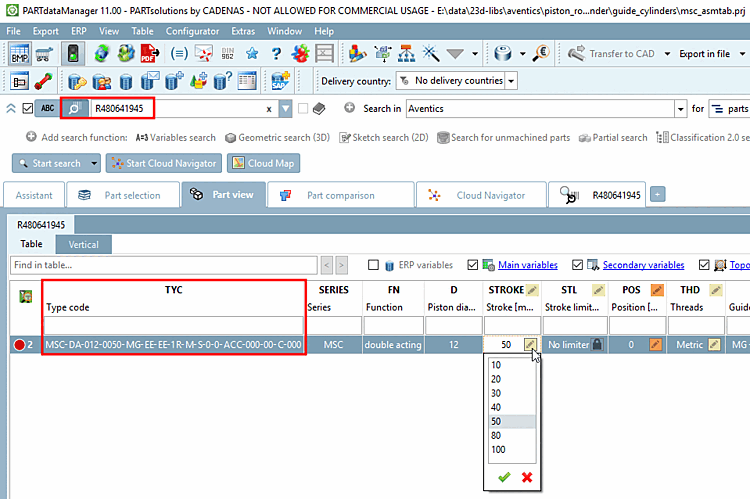- 5.12.3.1.9.1. Use of CNSORDERNO and CNSTYPECODE with examples
- 5.12.3.1.9.2. Benefits of classification according to CNSORDERNO and CNSTYPECODE
- 5.12.3.1.9.3. Plugin "Resolution check "
- 5.12.3.1.9.4. Plugin "Classify projects in batch run"
- 5.12.3.1.9.5. TestMeta: General for order number or type code
- 5.12.3.1.9.6. TestMeta: ReverseConfigs / Reverse Search (automatic)
- 5.12.3.1.9.7. Index order numbers dependent on value ranges
- 5.12.3.1.9.8. Limit resolving of value ranges (yellow fields) via config key
PARTproject -> Settings -> General tab -> Variables -> Variable with order number and/or variable with type code
![[Note]](https://webapi.partcommunity.com/service/help/latest/pages/en/ecatalogsolutions/doc/images/note.png) | Note |
|---|---|
| |
In the PARTdataManager you can switch between normal full text search [Full-text search]
 and search by order number or type designation [Order number or type code]
and search by order number or type designation [Order number or type code]
 .
.
The search method order number or type designation [Order number or type code]
 should be used if it is explicitly searched for. Due to its uniqueness, this search always leads to the desired result (provided the catalog is prepared accordingly).
should be used if it is explicitly searched for. Due to its uniqueness, this search always leads to the desired result (provided the catalog is prepared accordingly).
The method not only produces the desired result for a fixed order number/type designation [Order number], but also if it is composed using values from value range variables, both for simple and complex compositions.
![[Note]](https://webapi.partcommunity.com/service/help/latest/pages/en/ecatalogsolutions/doc/images/note.png) | Note |
|---|---|
Catalogs may contain simple projects without value ranges or with value ranges and those again can be build more simple or complex. To determine which cases exist in a catalog, the resolution check [Resolve check] should be carried out. See resolution Section 5.8.2.1.16.26, “ Reverse Search - Resolve check (automatic) ”. | |
Simple project without value ranges
Project with value ranges which can be resolved by inclusion into the full-text search index
Inclusion in the full-text search index is possible if there are fewer than 25,000 possible combinations per project or 50,000 per catalog (default limit) in addition to the standard lines. The limit is set using the configuration file
%cadenas_setup%/partsol.cfg. See Section 5.12.3.1.9.8, “Limit resolving of value ranges (yellow fields) via config key ”.Project with value ranges, which need to be resolved via Reverse Search
These are projects with very complex value ranges, the resolution of which would result in millions and billions of possible combinations, which exceeds the limit set by the config (max. 25,000 per project, max. 50,000 per catalog) for inclusion in the full-text search index (Lucene index).
When executing the resolve check for these projects a mapping file will be automatically created by which these projects can be found.
The VARSEARCHRESOLVEORDERNO key[44] must be set correctly. This should be set automatically by using the resolution check pluginSection 5.8.2.1.16.26, “ Reverse Search - Resolve check (automatic) ”).
These projects require a special mapping file (
graphlookup.map) [is created automatically when the full text search index is created], which can be evaluated automatically. See Section 5.8.2.1.16.26, “ Reverse Search - Resolve check (automatic) ”.[45]In special cases, if automatic creation is not possible for certain projects, a so-called ReverseConfig file (
pnoreverse.cfg) can also be created manually. A plugin is available to simplify this. See Reverse TypeCode rule editor.
Special case for 2) and 3 Special case for 2) and Only a certain number of the actually possible combinations from the value range fields have an order number and are actually available or can be ordered.
-> A CSV (
pnomapping.csv) with mapping information of order number [Order number] and type code [Type code] is stored in the catalog root directory.-> The search is entered using the order number with search mode Search by order number / type code [Search for order number / type code]
 but the search is actually carried out in the background using the type code.
but the search is actually carried out in the background using the type code.
[43] The class variables [Class variables]
CNSORDERNO and CNSTYPECODE are mapped to the desired variable under Variable with order number and Variable with type key. See also Section 5.12.3.1.10, “Simple
assigning of important variables to CNS classification
”.
[44] Key VARSEARCHRESOLVEORDERNO. At project level, this is located in the project file, at catalog level in $CADENAS_DATA/23d-libs/<katalogname>/dir.prjno GUI equivalent. Manual intervention is not necessary.
[45] Always make sure that you have an up-to-date full-text search index and/or geo search index for the required catalogs to ensure that all the functions of your software version are actually available. (With V11 SP10, for example, the function Reverse Search - Test of order number search [Reverse Search – Test reverse search] has been added which accesses the full text search index)


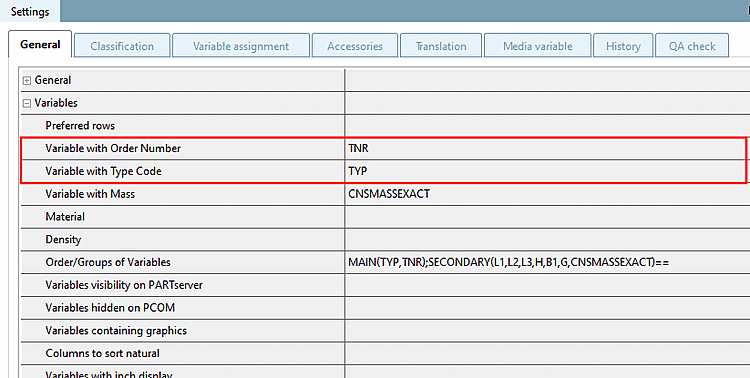
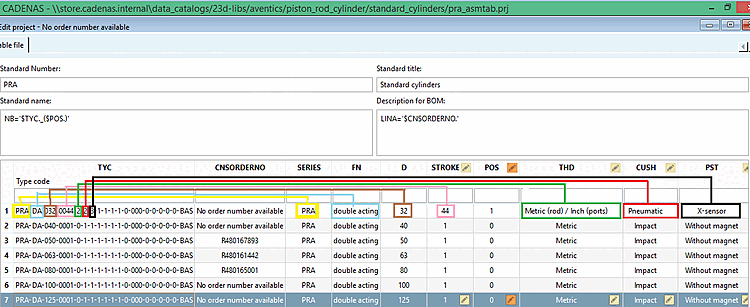


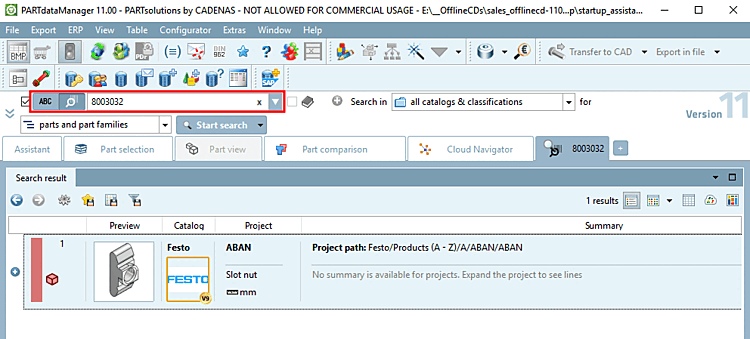
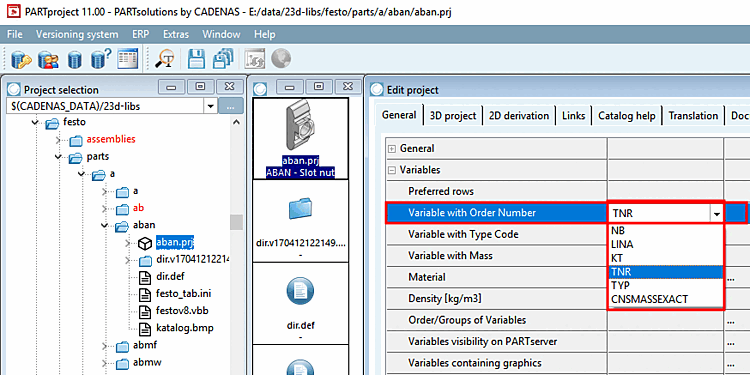
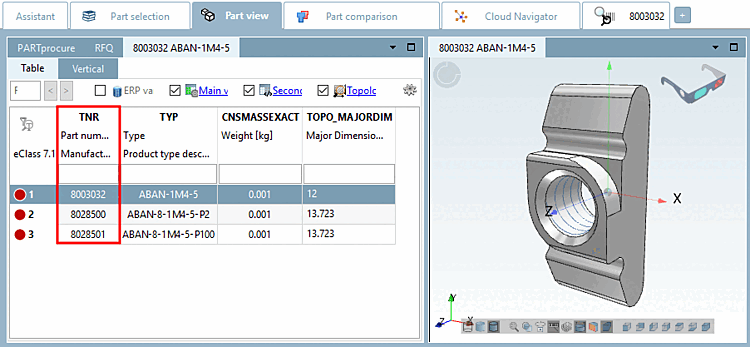
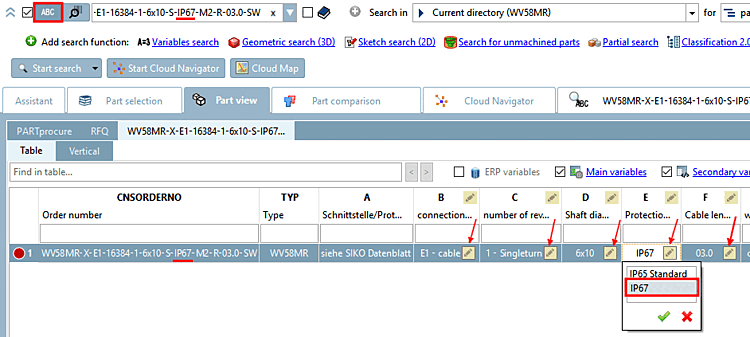
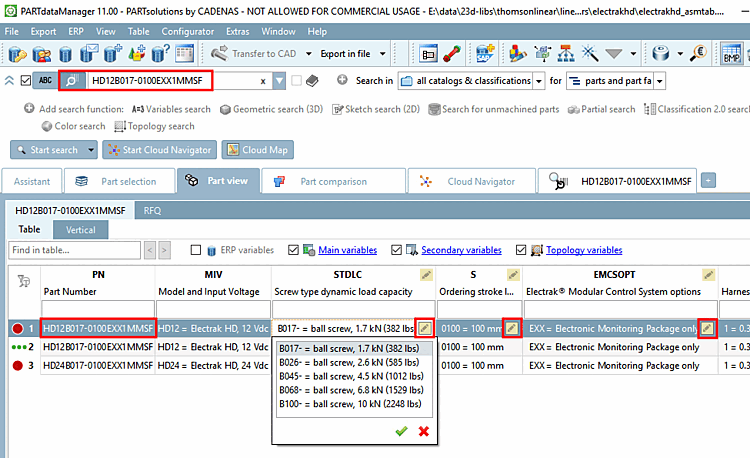

![[Caution]](https://webapi.partcommunity.com/service/help/latest/pages/en/ecatalogsolutions/doc/images/caution.png)
